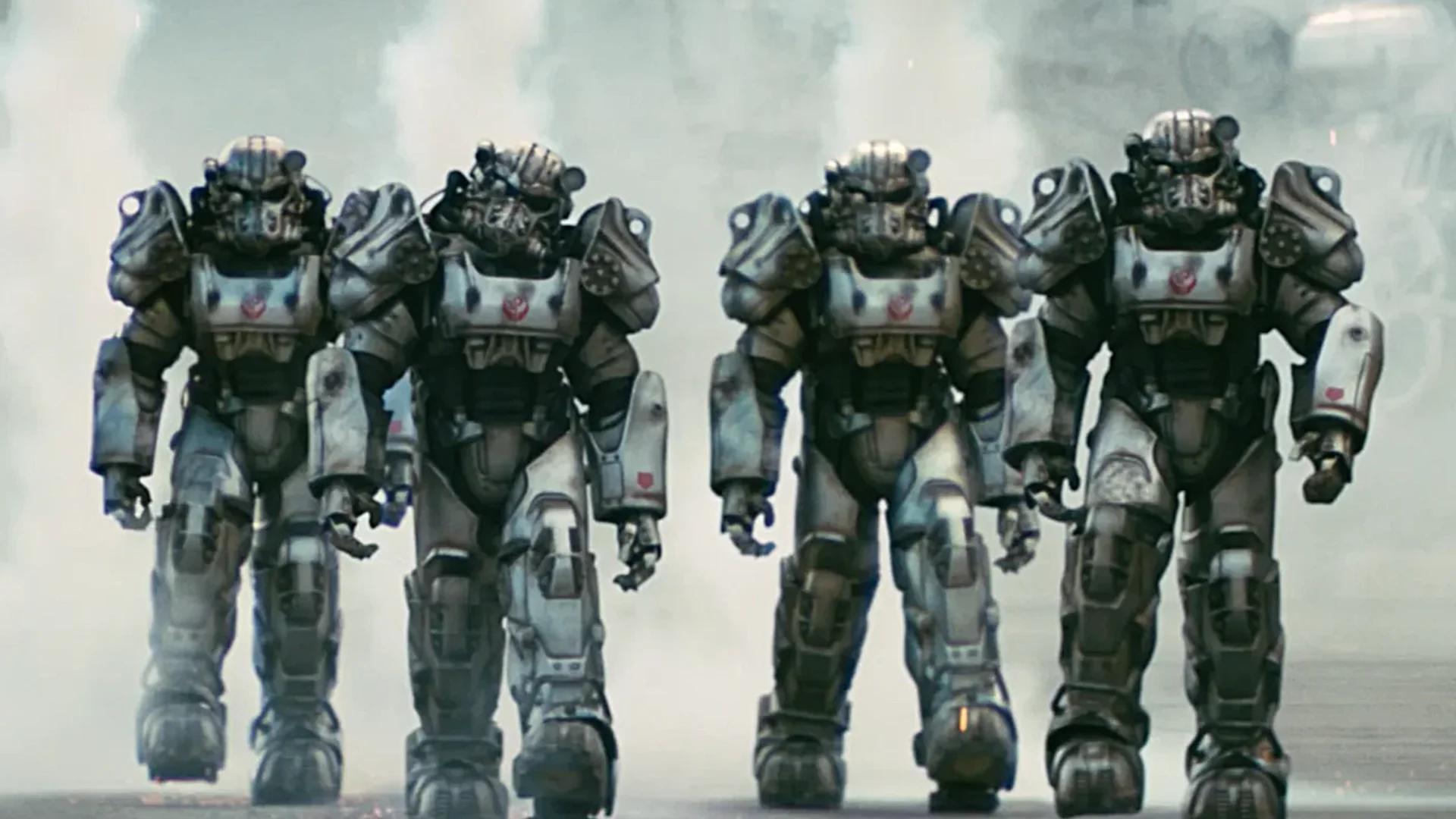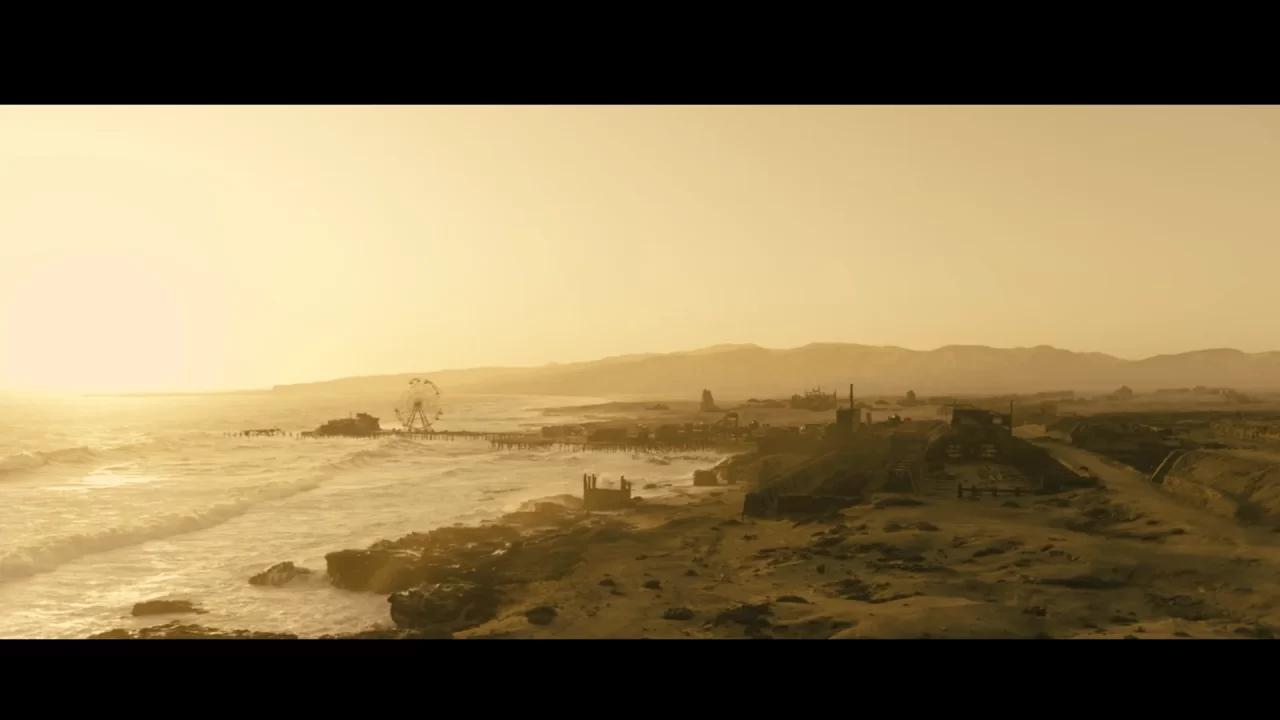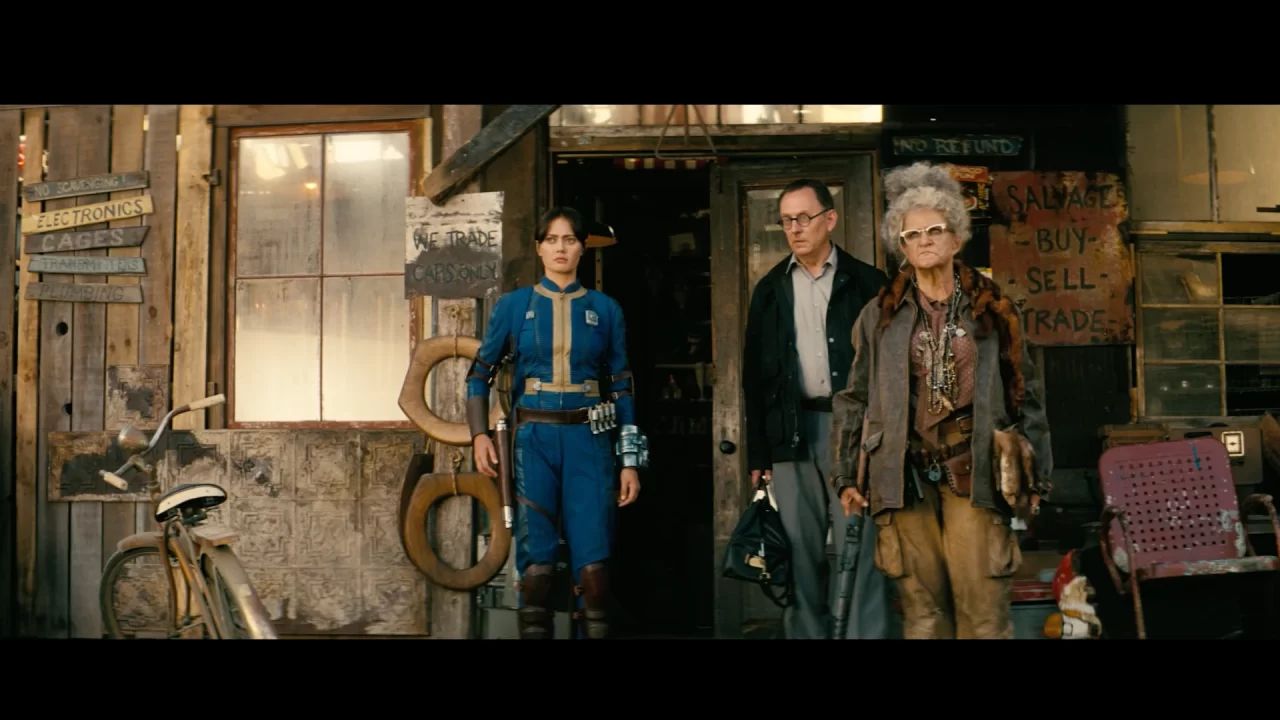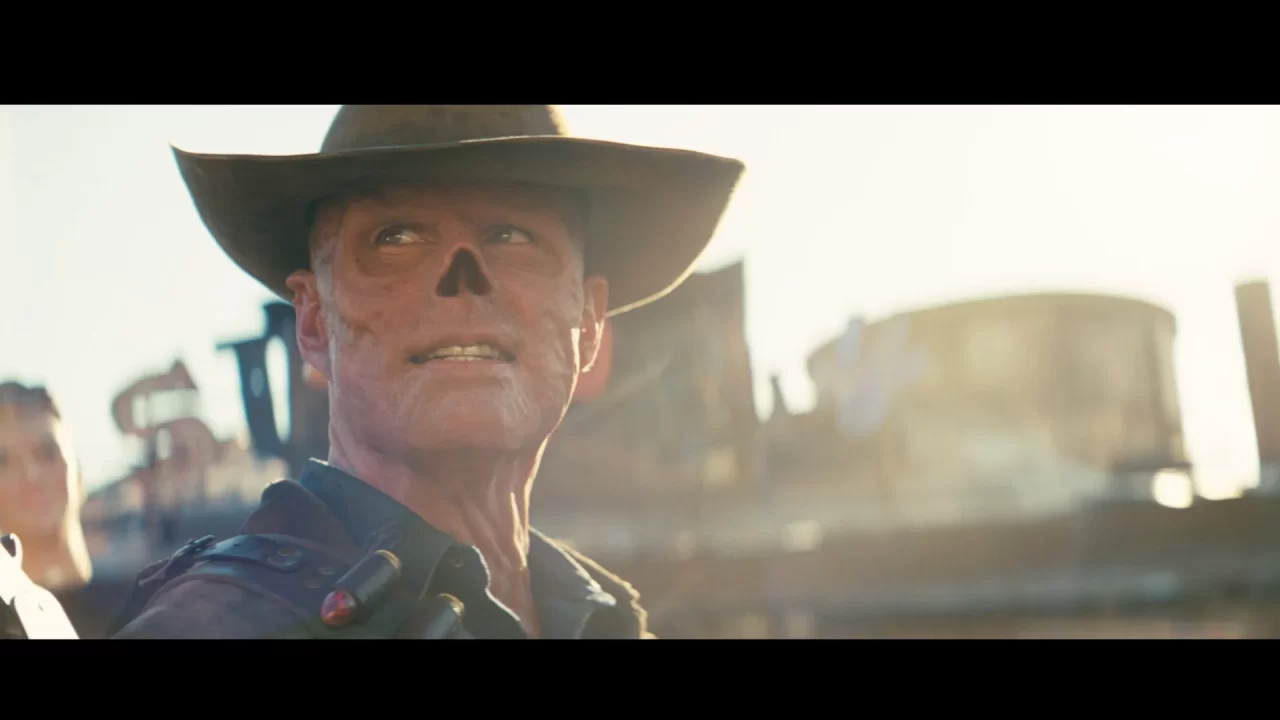Nowadays, a lot of people are saying that video game adaptations are the new comic book movies.
After decades of unfaithful garbage like Wing Commander, Hitman, and Super Mario Bros., we’re finally getting hyper-faithful shows and movies like The Last of Us, Sonic the Hedgehog, and The Super Mario Bros. Movie. Video games on film are hot right now, and Amazon wants a piece of that pie. Teaming up with Bethesda Game Studios, along with co-creators Graham Wagner and Geneva Robertson-Dworet, they have created an eight-episode television series on Prime Video based on the beloved post-apocalyptic RPG series, Fallout. Any fan who has watched the trailers knows that the show’s aesthetic might look like Fallout, but does the show capture the qualities that made the series beloved by so many fans worldwide?
After watching the first season, I believe the answer is yes. This is not just a good video game adaptation; it is a rock-solid (if short) season of premium TV that has restored my hope in the future of the Fallout franchise, both on television and in video games.
Whereas many recent video game movies and shows have been straightforward one-to-one adaptations of their source material (The Last of Us is a perfect example of this), Fallout tells a brand-new story that advances the overall narrative of the established lore. It’s much more akin to the fifth entry in the video game series than an adaptation of an existing work, as the status quo established here will likely impact all future games. All of your favorite Fallout factions are here, from the Brotherhood of Steel to the New California Republic to Vault-Tec, but they might be playing different roles than you would expect. Some will rise, while others will fall. War never changes, but the world of Fallout certainly does in this show.
Fallout starts the same way as many of the games in the series: In a Vault. Welcome to Vault 33, one in a trio of interconnected vaults that occasionally trade goods and genetic diversity with each other. Lucy MacLean, the overachieving daughter of Vault 33’s Overseer, is looking for a husband, so an appropriate “trade” is organized with neighboring Vault 32. But after a disastrous wedding dinner, it’s discovered that the visiting Vault-Dwellers from 32 are actually Raiders in disguise. They ransack 33, kill dozens of residents, and kidnap the Overseer for unknown reasons. Lucy, desperate to save her father, makes a fateful decision to leave the safety of the Vault and head to the surface to track down the Raiders’ leader. Alongside this, we are introduced to Maximus, an eager Brotherhood of Steel initiate who wants nothing more than to become a Knight. We also meet The Ghoul, a ghoul bounty hunter on a quest to track down a defector from the mysterious Enclave. Over the course of eight episodes, the paths of Lucy, Maximus, and The Ghoul will converge, leading them to uncover a two-hundred-year conspiracy that threatens the LA Wasteland and everybody in it.
As a longtime fan of Fallout, my main concern going into this show was whether it would resonate with folks unfamiliar with the games. While I personally found myself delighted at every turn by the faithful production design, characters, easter eggs, and storylines, could the show effectively introduce everything to viewers not already immersed in the lore? I shouldn’t have worried, because the show turns out to be remarkably accessible.
For example, in the first few episodes, Vault-Tec is portrayed positively, as we see the organization through the eyes of the happy Vault-Dwellers. As far as the audience knows, it’s an organization simply working for the betterment of humanity and America! However, as the series progresses, it’s gradually revealed that Vault-Tec may not have humanity’s best interests at heart. Players are likely responding to this revelation with a deadpan “No kidding,” but for those unfamiliar with the lore, the show skillfully teases out through the season that Vault-Tec might be more than they seem.
My other concern about Fallout was its visual design, as it looks exactly like the games. Prime Video has realized expansive (and expensive) alternate reality worlds before—their jaw-dropping adaptation of Philip K. Dick’s The Man in the High Castle comes to mind—but all they needed to do there was imagine a Nazi version of the ’60s. In Fallout, everything is taken verbatim from the video games (most specifically, Fallout 4) and put on screen with little to no compromise. In the hands of a less skilled team, these visuals would arguably look ridiculous, as they’re an exaggerated cartoon of the post-apocalypse infused with a ’50s retro-future aesthetic and hard sci-fi edge. The equipment, the costumes, the technology, the locations—everything—is hyper-stylized. And yet, the visuals aren’t just effective on screen; they look incredible. This might be one of the most faithful visual adaptations of a video game ever made, and despite the heightened sense of reality, I fully bought into the world they brought to life.
And there is the violence. From the original games, where machine guns tore apart character sprites, to the Bethesda games, where you pop the heads of your enemies like balloons, Fallout has always been comfortable with exaggerated levels of gore. This series certainly captures that aspect of the games! Bullets don’t merely hit people; they blow giant holes through them. Limbs are torn to shreds, heads are severed, and skin is peeled away from flesh as cannibalism is depicted on screen. The show is absolutely brutal, constantly celebrating the comedic amounts of gore depicted on screen, and it’s entertaining as hell.
One of the cleverest aspects of this show is how it handles its protagonists. In the Fallout games, you step into the shoes of the main character and roleplay however you choose. Whether you want to embody a paragon of virtue, venturing into the Wasteland to help everyone you encounter, or prefer to be a complete sociopath—stealing, destroying lives, and plunging the Wasteland into darkness—the choice is yours. Each player’s moral choices make their version of Fallout a little bit different from everyone else’s. The series translates this by having three distinct protagonists with characterizations that reflect the karma choices you can get in the games. In other words, they are archetypes of the three ways that players will play their character: positive, neutral, and negative karma.
Arguably, the main character is Lucy, the Vault-Dweller driven to the surface. She’s an old-fashioned, All-American Vault-Dweller whose can-do spirit and cheerful disposition mean she can accomplish anything… until she ventures into the Wasteland. Her wholesome approach to conflict resolution is predictably disastrous when confronted by the non-stop moral compromises the Wasteland demands from her. Ella Purnell is fantastic in the role, embodying the essence of a “positive karma” protagonist through and through.
Next, we have Maximus, who falls in the middle of the karma alignment chart. He isn’t evil or unnecessarily cruel, but he also knows the Wasteland and understands what it takes to survive. Aaron Moten’s performance as Maximus is notably quirkier than everyone in the show. There’s a general sense of unease inherent in the character, as if not even he knows what he is willing to do to achieve his goals. He wants to become a Knight of the Brotherhood, but does he really understand what that means? His idealized view of the organization leads to a great deal of friction when the reality of this overly dogmatic organization begins to make itself clear. Maximus arguably goes through the biggest character journey throughout the series, especially once he meets up with our other protagonists.
And then there’s Walton Goggins as The Ghoul, and he unsurprisingly steals the show. We first meet him in a flashback to pre-war 2077 when he was known as Cooper Howard, a famous cowboy actor and loving family man who recently took on the role of spokesman for Vault-Tec. By the end of the first episode, we catch up with him 219 years later as a sardonic and brutal ghoul bounty hunter who will stop at nothing to track down his bounties. Morality doesn’t play into it; he simply does what is necessary to win. In other words, we have our “negative karma” protagonist, a character who does unthinkable acts of brutality and evil to those he encounters in the Wastes to achieve his goals. However, despite that, The Ghoul still comes off as a sympathetic character, arguably due to Walton Goggins’ infinitely entertaining and charismatic portrayal.
The supporting cast also excels in their roles. Moisés Arias plays Norm, Lucy’s underachieving little brother, who transforms from an unsympathetic, whiny character into one of the show’s biggest heroes. And finally, we have Lucy’s father, Overseer Hank. Appearing in just a few episodes of the series, Kyle MacLachlan delivers an excellent performance as a friendly, ’50s-style “Father Knows Best” Overseer and gee-shucks Dad. But for those of us who know the games, there is always more under the surface when it comes to Vault-Tec Overseers, and the show becomes an intriguing waiting game to see if there is more to Hank than just the love of his family.
Is Fallout worth your time? Absolutely. I have always felt that Fallout is special, and Amazon has spectacularly adapted it into a new medium. By the last episode, I wanted more, which is the best possible state to leave your audience in. The show not only accurately adapted the world, tone, and style of Fallout, but also delivered a compelling, standalone story that advanced the lore of the series.
In fact, my only real complaint was that I found myself wanting to play the show rather than watch it! Thankfully, there are several games available to give me that option, and thanks to fan modding, there are always new experiences to explore in the Wastelands of post-apocalyptic America. That said, I do hope that Prime Video will get a chance to return to their vision of the Wasteland before long with a second season. The first season of Fallout is a standout television show, and will hopefully become a model for effectively adapting a video game into an engaging and faithful work of film. Crawl out through the fallout, baby, and check out Fallout as soon as you can!
You can watch Fallout on Prime Video April 10th, 2024, at 6:00 pm PT/9:00 pm ET.
This article is based on an advance screening of the Fallout show provided to RPGFan by a PR firm. This relationship in no way influenced the author’s opinion, and no compensation was provided in relation to coverage. Learn more on our ethics & policies page.
In addition, this article originally had incorrect credits for the show’s co-creators, but it has been amended above. We apologize for the error.






